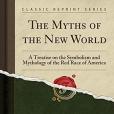《The Myths of the New World: A Treatise on the Symbolism and Mythology of the Red Race of America (Classic Reprint)》是一本圖書。
基本介紹
- 外文名:The Myths of the New World: A Treatise on the Symbolism and Mythology of the Red Race of America (Classic Reprint)
- ISBN:9781440071454
內容簡介
Excerpt from The Myths of the New World: A Treatise on the Symbolism and Mythology of the Red Race of America I have written this work more for the thoughtful general reader than the antiquary. It is a study of an obscure portion of the intellectual history of our species as exemplified in one of its varieties. What are man's earliest ideas of a soul and a God, and of his own o...(展開全部) Excerpt from The Myths of the New World: A Treatise on the Symbolism and Mythology of the Red Race of America I have written this work more for the thoughtful general reader than the antiquary. It is a study of an obscure portion of the intellectual history of our species as exemplified in one of its varieties. What are man's earliest ideas of a soul and a God, and of his own origin and destiny? Why do we find certain myths, such as of a creation, a flood, an after world; certain symbols, as the bird, the serpent, the cross; certain numbers, as the three, the four, the seven - intimately associated with these ideas by every race? What are the laws of growth of natural reli gions? How do they acquire such an influence, and is this influence for good or evil? Such are some of the universally interesting questions which I attempt to solve by an analysis of the simple faiths of a savage race. About the Publisher Forgotten Books publishes hundreds of thousands of rare and classic books. Find more at www.forgottenbooks.com This book is a reproduction of an important historical work. Forgotten Books uses state-of-the-art technology to digitally reconstruct the work, preserving the original format whilst repairing imperfections present in the aged copy. In rare cases, an imperfection in the original, such as a blemish or missing page, may be replicated in our edition. We do, however, repair the vast majority of imperfections successfully; any imperfections that remain are intentionally left to preserve the state of such historical works.

